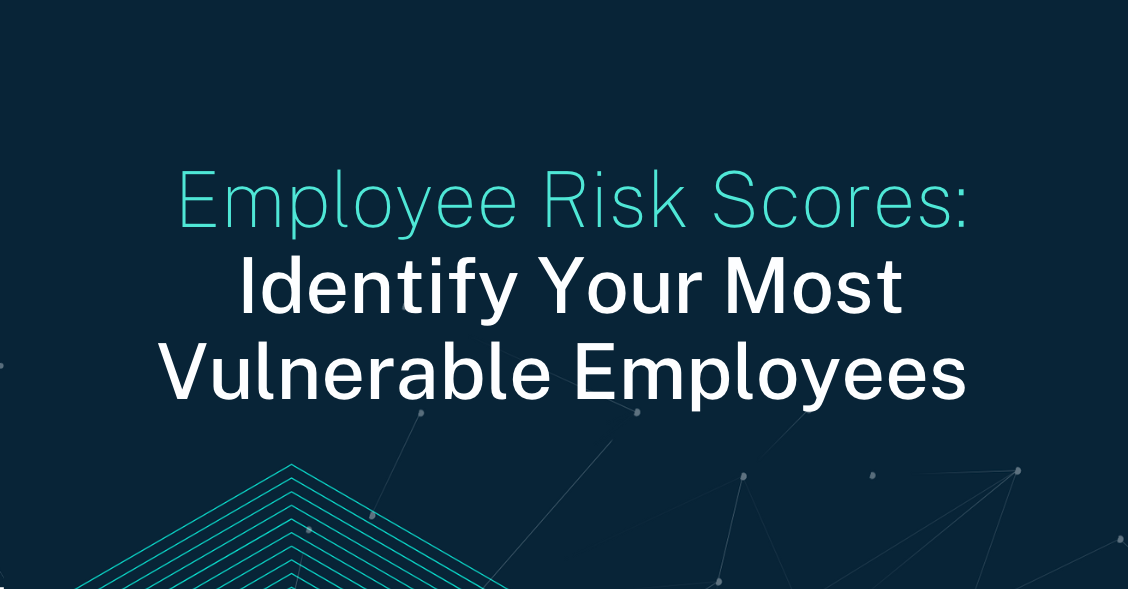

Blogs 
March 21, 2024
Living Security Team
Employee Risk Scores: Identify Your Most Vulnerable and Vigilant Employees

The line between physical and digital security is increasingly blurred in the modern workplace. This convergence necessitates a new approach to risk management, especially when it comes to cybersecurity. Employee risk scores are a critical tool in identifying and mitigating vulnerabilities within an organization. We'll explore what these scores are, how they're calculated, and their significance in today's dynamic work environment.
Understanding Employee Risk Scores
Employee risk scores are quantified evaluations of the potential risks an individual employee poses to an organization. These scores consider factors like job role, access to sensitive information, cybersecurity awareness, and the extent of communication with the outside world. For instance, an employee with high-level access to sensitive data but low cybersecurity awareness might score higher (more at risk) than others. Understanding these scores helps companies efficiently allocate resources to protect their most vulnerable points - their employees.
Types of Employee Risks and the Importance of Identifying Vulnerable Employees
Understanding the spectrum of employee risks is crucial for any organization. From insider threats to unintentional cybersecurity lapses, the variety of risks posed by employees is as diverse as it is significant.
It’s important to understand the different types of employee risks, such as fraud, general misconduct, and, particularly, cybersecurity concerns like falling prey to phishing scams or intentional data leaks. Recognizing these potential hazards is not just about mitigating risks; it's a proactive step toward safeguarding against financial, reputational, and legal repercussions.
Types of Employee Risks
Risks posed by employees can vary widely. They include insider threats, cybersecurity lapses, fraud, and general misconduct. Each type of risk demands specific attention. For example, an insider threat might involve intentionally leaking sensitive information, while a cybersecurity lapse could be an employee falling for a phishing scam.
Why is Identifying Vulnerable Employees Important
Failing to identify high-risk employees can lead to significant consequences such as financial losses, reputational damage, and legal complications. In the cybersecurity context, this could mean data breaches or compromised systems. Proactively identifying these vulnerabilities enables organizations to preempt such events, leading to cost savings and reinforced security.
Risk Reduction Through Security Awareness Training and Support
In the quest to combat employee-related security risks, two key strategies stand out: Security Awareness Training and Ongoing Support for Employees.
Security Awareness Training
This is a critical component in mitigating employee risks. Training programs tailored for those with significant data access or external communication can significantly reduce risk. It’s about creating an environment where security is second nature. Examples of successful programs include regular phishing simulations or cybersecurity workshops.
Ongoing Support for Employees
Management plays a pivotal role in supporting employees to maintain security practices. This ongoing support fosters a security-conscious culture, where employees feel equipped and vigilant in their roles.
Implementing and Managing an Employee Risk Score Program
Navigating the complex terrain of employee-related cybersecurity risks demands a nuanced approach, one that involves calculating and managing Employee Risk Scores. First, it’s important to importance of the mechanics of calculating, implementing, and maintaining Employee Risk Scores in an organization's cybersecurity framework.
Calculating Employee Risk Scores
Factors like job role, access level, past security incidents, training, and communication patterns are crucial. Each offers a unique insight into how an employee might be a potential risk, particularly in cybersecurity.
Implementing an Employee Risk Score Program
Key steps include setting clear objectives, choosing the right tools, and ensuring employee buy-in. Communication is essential to convey the program's benefits and objectives, especially in reducing cybersecurity threats.
Monitoring and Updating Risk Scores
Risk scores are not static. They must be regularly updated to reflect changes in employee roles, behaviors, and the evolving cybersecurity landscape. This ensures that the organization remains agile and responsive to emerging threats.
Securing Your Organization's Future: The Power of Proactive Employee Risk Management
In summary, employee risk scores are a vital component of modern employee risk management. They provide actionable insights, enabling organizations to fortify their defenses proactively. Incorporating solutions like those offered by Living Security into your Total People Risk Management (TPRM) strategy can significantly enhance your organization’s resilience against a spectrum of risks, especially in cybersecurity.
By adopting a proactive approach to people risk management, companies not only protect their current operations but also secure their future against the ever-evolving landscape of threats. The power of well-implemented employee risk management lies in its ability to transform your workforce from a potential liability into your strongest line of defense.